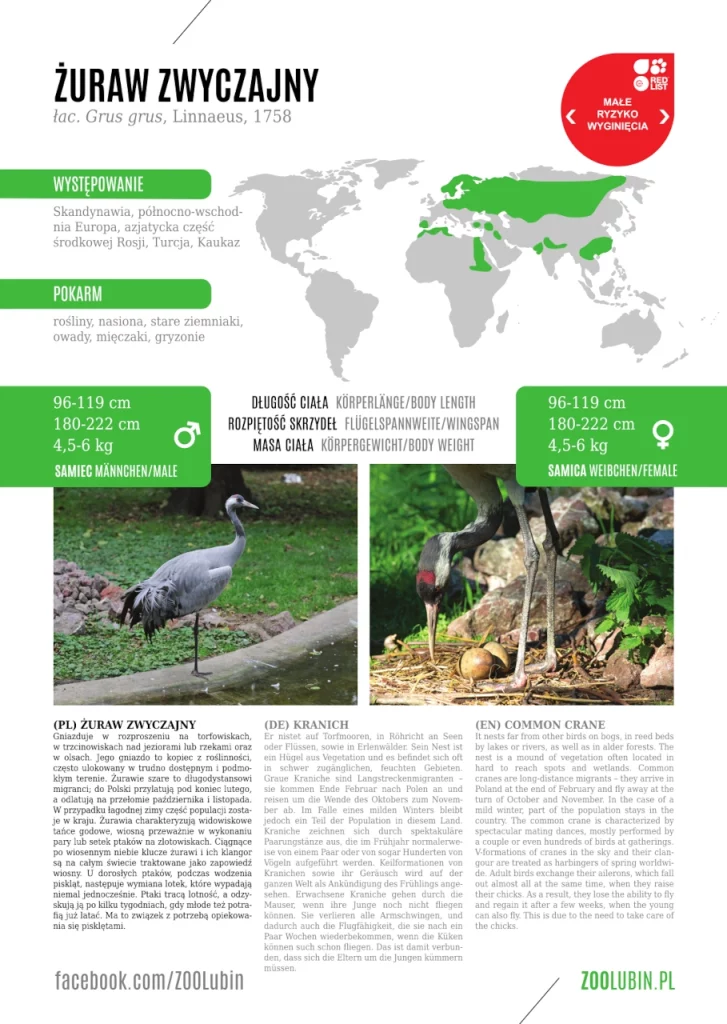
DOWNLOAD THE SPECIES LABEL – PDF file (size 2848 KB)
Common crane
łac. Grus grus, Linnaeus, 1758
The common cranes nest at fair distances from each other; they build a mound from vegetation, often located in hard to reach spots and wetlands. These birds are long-distance migrants – they arrive in Poland at the end of February and fly away at the turn of October and November. In the case of a mild winter, a part of the population stays in the country. The common crane stands out due to its spectacular mating dances, performed by a couple or even hundreds of birds at gatherings. V-formations of cranes in the spring sky are interpreted as harbingers of spring. While caring for freshly hatched chicks, adult birds exchange their rectrices, which fall out almost all at the same time. As a result, they lose the ability to fly and regain it after a few weeks, when the young can also fly.
Distribution: Scandinavia, Northeastern Europe, the Asian part of Central Russia, Turkey, the Caucasus
male / female
body length: 96–119 cm
wingspan: 180–220 cm
body mass: 4,5–6 kg
